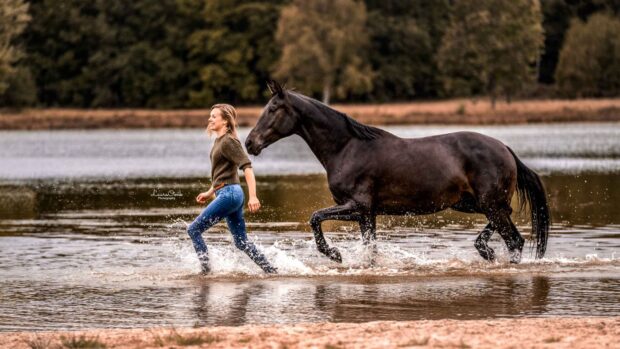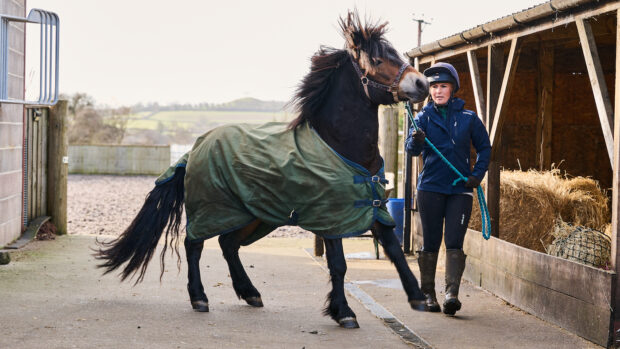With the British Equestrian Federation advising against riding during the coronavirus pandemic, many riders’ daily routine with their horse has fallen apart.
But if you’re still able to go to the yard (and we appreciate some can’t or have chosen not to at this time), there are still options to bond with your horse, keep him or her happy and amused, and continue his education – and your own too.
1. Lungeing can be a great way to keep your horse exercised and improve his way of going. Make sure you wear a hat, gloves and suitable footwear and read up on what your horse needs to wear and how to lunge if you are not experienced. These problem-solving tips from Jennie Loriston-Clarke may prove useful if your horse tries to turn in or away to avoid working.
2. Never tried long-reining? Now’s the time. As with lungeing, ensure you and your horse are suitably dressed for the occasion and check out this advice from leading show producer Julie Templeton on how to introduce long-reining. You can move on to exercises such as leg-yielding once you and your horse have had some practice.
3. Give your horse a holiday. Assuming there are no particular reasons why your horse can’t take time off work, a break can be good for him both mentally and physically. How you manage him during this time will depend on his personality and body shape – a horse who is liable to become overweight or could succumb to laminitis will need his weight managed carefully and may not be able to spend 24 hours a day in a field. Similarly, some horses don’t enjoy being full-time field animals and need the routine of time in a stable each day. Others may benefit from a proper break where they are turned away, with twice daily checks.
4. Take the time to give your horse some really good grooming sessions. Scrub his feet. Get to know every inch of his body – you might be surprised how many little lumps and old scars he has that you’ve not noticed in your quick daily flick over. Learn how warm each of his legs feels and how filled they are, and how this varies at different times of the day. Pull his mane and tail if they need it, trim his bridle path and heels as appropriate for his type and job.
5. Try horse agility. A basic course would involve leading a horse through a corridor in the shape of an S without the horse stepping out or touching the poles. You could also work towards leading your horse through a curtain or a narrow gap or over a tarpaulin. Always assess the risk of trying new exercises at this time, particularly if your horse is sharp or spooky.
6. Those carrot stretches the physio gave you that you never quite have time for? Yup, now’s the time.
7. Sit down and assess your horse’s conformation. Pull out that Pony Club Manual of Horsemanship then take a look at your horse and make a critical analysis of his conformation – think about how that impacts on his work and the way you train him. Perhaps your horsey friendship group could all share conformation pictures of your horses, take notes and share views in an evening video call with a glass of wine. Keep it polite and objective – remember, everyone thinks their ugly duckling is a swan!
8. This is the ideal time to perfect your bandaging and plaiting technique. Check out this video on how to apply a stable bandage correctly and read up on leading show producer Katie Jerram’s plaiting tips.
You may also be interested in:

Love hunting? 7 ways you can make the most of your days during lockdown
The hunting person’s guide to occupying yourself for a whole day during the current Covid-19 crisis...

4 fitness exercises to do at home that could improve your riding

Subscribe to Horse & Hound magazine today – and enjoy unlimited website access all year round




